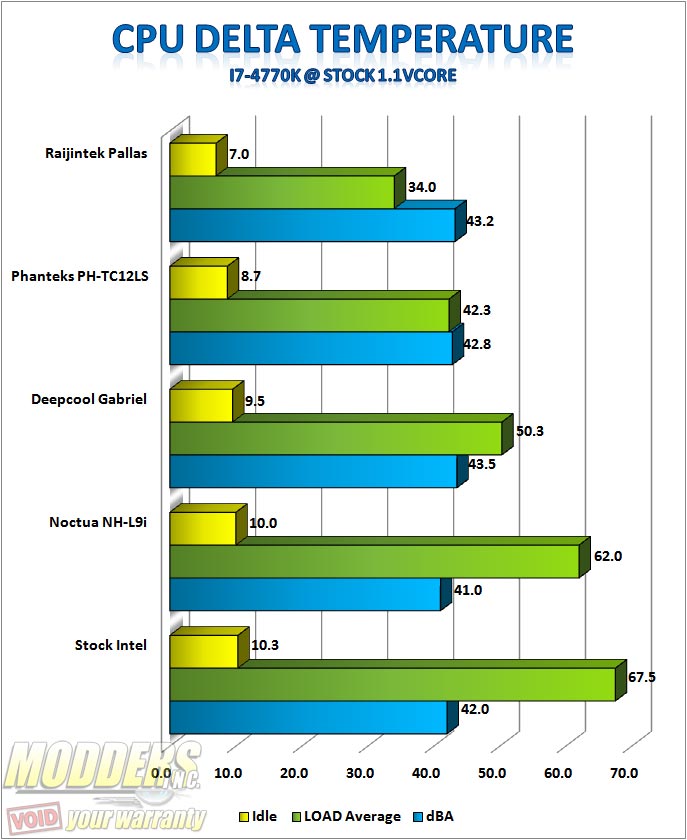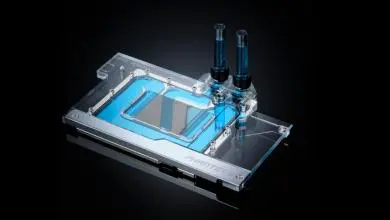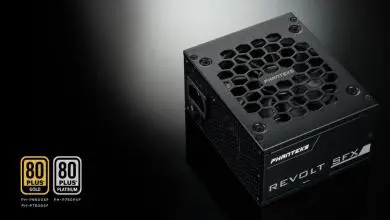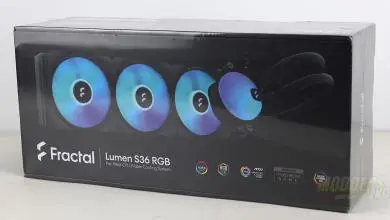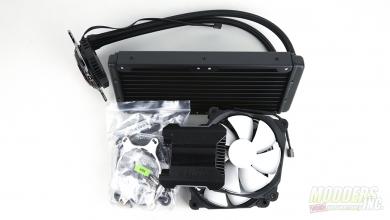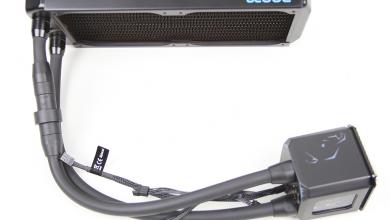CPU Cooler
Phanteks PH-TC12LS CPU Cooler Review: Low-Profile, High Value
« Installation Procedure and Clearance Issues | Final Thoughts »
Test System and Benchmark Results of the Phanteks PH-TC14S
Test System and Benchmark Results of the Phanteks PH-TC14S
- Ambient temperature monitored at case intake and temperature Delta was used.
- All case and heat sink fans were benchmarked with fan control settings disabled and running at 100% unless otherwise specified.
- Intel integrated video is utilized to eliminate additional ambient heat source from discrete graphics cards.
- Temperatures are averaged (last minute) from individual core temperature results monitored by AIDA64 after 15 minutes.
- Stock settings have all power saving features enabled in the motherboard with Vcore set static to 1.1V and set to “Balanced” in the OS.
- All tests were taken at least three times to get the final result.
- Note that performance results on this setup are not directly comparable with any benchmarks from previous reviews as the UEFI BIOS on the motherboard has been updated and now has a much tighter control on the Vcore voltage.
- Since it is an ASUS motherboard, it engages all cores when it turbos so temperature will be higher compared to other Z87 motherboards that do not by default.
- An American Recording Technologies SPL-8810 was used for noise level measurement in dBA, 20CM away from the center fan intake.
| Processor | Intel Core i7-4770K (Retail) |
| Motherboard | ASUS Maximus VI Gene Z87 Motherboard (1603 BIOS) |
| Memory | Mushkin Stealth 1600MHz DDR3 |
| Drive | OCZ Agility 4 256GB SSD |
| Video Card | Intel Integrated Graphics |
| Thermal Compound | Noctua NT-H1 |
| Case | DimasTech Mini v1 |
| Power Supply | Corsair HX850W |
| Operating System | Windows 7 x64 Pro |
Benchmarks:
Sound Level vs Fan Speed of the PH-120FP Fan:
| RPM | Sound Level (dBA) |
| 1600 | 42.8 |
| 1500 | 39 |
| 1200 | 37.6 |
| 1000 | 36.2 |
| 800 | 35 |
Test Set Specification Comparison:
| Comparison Heatsinks | Phanteks PH-TC12LS | Stock Intel i7-4770K CPU Cooler |
Noctua NH-L9i |
Deepcool Gamerstorm Gabriel | Raijintek Pallas |
| Fan Size (mm) | 1 x 120 | 1 x 75 (built-in) | 1 x 92 (14mm thick) | 1 x 120 (20mm thick) | 1 x 140 (13mm thick) |
| Max fan RPM | 1600 | 2000 | 2500 | 1800 | 1400 |
| PWM | YES | YES | YES | YES | YES |
| Fan Bearing Type | Updraft Floating Balance Bearing | Ball bearing | SSO2 | Hydro Dynamic Bearing | Sleeve |
| Material |
Copper base and heatpipes, Aluminum fins, Nickel plated | Copper contact and Aluminum | Copper base and heatpipes, Aluminum fins, Nickel plated | Copper base and heatpipes, Aluminum fins, Nickel plated | Copper base and heatpipes, Aluminum fins, Nickel plated |
| Height with fan (mm) |
74 | 45 | 37 | 60 | 68 |
| Heatpipe Thickness (mm) | 6 | N/A | 6 | 6 | 6 |
| Heatpipe Count | 6 | 0 | 2 | 4 | 6 |
| Price (in USD) | 39.99 | FREE (bundled in retail box) | 44.99 | 49.99 | 45.99 |
Performance Summary:
With the stock Intel i7-4770K cooler as the reference (which actually tops out at 99C), all the other aftermarket coolers understandably fare a lot better. Not surprisingly, the thermal performance lines up with their respective sizes as well with the smallest Noctua NH-L9i sitting closer to the reference and the largest 140mm Raijintek Pallas low-profile cooler at the top. The Phanteks PH-TC12LS bests the Deepcool Gabriel by 8C and manages to run quieter as well.
